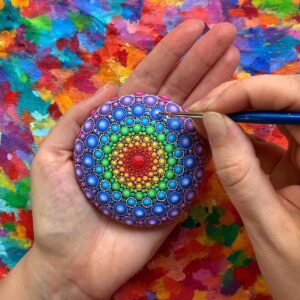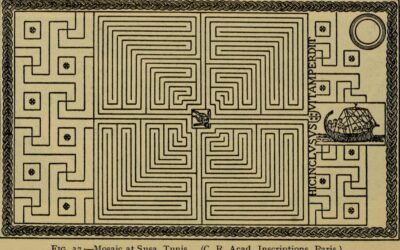 Understanding the Body-Brain Relationship
Understanding the Body-Brain Relationship
Traditionally, the body and brain were seen as separate entities, with the brain being the primary source of intellect and the body merely acting as a vessel. However, as our understanding of neuroscience and trauma deepens, we now realize that this perception is far from accurate. The body-brain connection is a complex system where the cognitive brain and the deeper emotional system continuously interact, often outside our conscious awareness.
The Significance of the Body-Brain Connection
The body brain, residing beneath our cognitive brain, holds valuable information and influences our cognitive processes. It regulates our deep emotional responses, signaling hunger, anger, fear, or sadness. This subcortical brain, which includes the basal ganglia, is where trauma tends to be stored. While traditional talk therapy focuses on understanding trauma cognitively, it often falls short in providing lasting relief. That is because the core of traumatic experiences resides in the body brain, beyond our cognitive reach.
Going Beyond Cognitive Understanding
When we experience triggers related to past trauma, such as post-traumatic stress disorder (PTSD) or anxiety, our reactions are not a conscious choice but rather a product of the body brain’s activation. The fight-or-flight response kicks in, signaling danger or threatening situations. Our emotional system interprets the world as either bad, dangerous, or unwelcoming, causing us to freeze, fight, or flee. These responses are deeply emotional, bypassing our cognitive intellect.
Exploring Brain-Based Therapies
To truly address the impact of trauma, therapies like Eye Movement Desensitization and Reprocessing (EMDR), QEEG brain mapping, brain spotting, or somatic and sensory-motor psychotherapy are crucial. These approaches tap into the depths of our emotional system, allowing us to access and process trauma stored in the body brain. Unlike prescriptive therapy, brain-based therapy focuses on connecting with and experiencing our deep emotional states, rather than offering quick fixes or intellectual insights.
My Experience with Brain Spotting
During my personal journey with brain spotting, I discovered a profound emotional experience that had always been present but remained unrecognized. Although the underlying emotions persisted, I gained the ability to acknowledge their presence and consciously choose my subsequent actions. While the intellectual understanding of the traumatic event may remain unchanged, I no longer panic or become overwhelmed in triggering situations. Brain spotting enabled me to recognize, validate, and release these emotions, transforming my response patterns.
The Body-Brain Connection: Emotional and Physical Footprints
The body brain stores information not as visual images or intellectual comprehension but as emotional and physical footprints. When we encounter triggers, our body remembers, often manifesting as muscular tension, migraines, cold sensations in the stomach, or a constricting chest. These physical reactions are accompanied by an energetic defensive posture, as our sensory-motor system mobilizes to protect us. By acknowledging and sitting with these experiences, we can begin to understand the profound impact of the body brain on our daily lives.
The body-brain connection highlights the vital role our bodies play in shaping our experiences and responses. Brain-based therapies provide a pathway to access and process deeply rooted traumas that cognitive approaches often overlook. As we navigate the complexities of our emotional lives, it is essential to recognize the power of the body brain and its influence on our overall well-being. By engaging with this concept and exploring brain-based therapies, we can find healing, resilience, and a newfound sense of control over our emotions.
Did you enjoy this article? Checkout the podcast here: https://gettherapybirmingham.podbean.com/
Bibliography:
- Levine, P. A. (2010). In an Unspoken Voice: How the Body Releases Trauma and Restores Goodness. North Atlantic Books.
- Porges, S. W. (2011). The Polyvagal Theory: Neurophysiological Foundations of Emotions, Attachment, Communication, and Self-regulation. W. W. Norton & Company.
- van der Kolk, B. A. (2015). The Body Keeps the Score: Brain, Mind, and Body in the Healing of Trauma. Penguin Books.
Further Reading:
- Damasio, A. (2000). The Feeling of What Happens: Body and Emotion in the Making of Consciousness. Mariner Books.
- Fogel, A. (2009). The Psychophysiology of Self-Awareness: Rediscovering the Lost Art of Body Sense. W. W. Norton & Company.
- Gendlin, E. T. (1982). Focusing. Bantam Books.
- Grand, D. (2013). Brainspotting: The Revolutionary New Therapy for Rapid and Effective Change. Sounds True.
- Herman, J. L. (2015). Trauma and Recovery: The Aftermath of Violence–From Domestic Abuse to Political Terror. Basic Books.
- Kabat-Zinn, J. (2013). Full Catastrophe Living: Using the Wisdom of Your Body and Mind to Face Stress, Pain, and Illness. Bantam Books.
- Levine, P. A. (1997). Waking the Tiger: Healing Trauma. North Atlantic Books.
- Ogden, P., Minton, K., & Pain, C. (2006). Trauma and the Body: A Sensorimotor Approach to Psychotherapy. W. W. Norton & Company.
- Rothschild, B. (2000). The Body Remembers: The Psychophysiology of Trauma and Trauma Treatment. W. W. Norton & Company.
- Scaer, R. C. (2014). The Body Bears the Burden: Trauma, Dissociation, and Disease. Routledge.
- Schore, A. N. (2019). The Development of the Unconscious Mind. W. W. Norton & Company.
- Shapiro, F. (2017). Eye Movement Desensitization and Reprocessing (EMDR) Therapy: Basic Principles, Protocols, and Procedures. The Guilford Press.
- Siegel, D. J. (2012). Pocket Guide to Interpersonal Neurobiology: An Integrative Handbook of the Mind. W. W. Norton & Company.
- van der Kolk, B. A., McFarlane, A. C., & Weisaeth, L. (Eds.). (2007). Traumatic Stress: The Effects of Overwhelming Experience on Mind, Body, and Society. The Guilford Press.




0 Comments